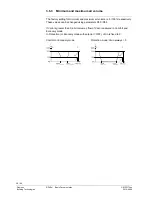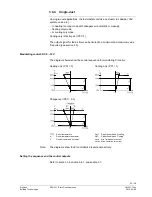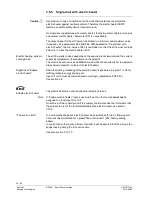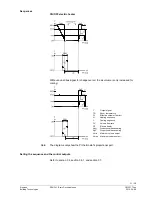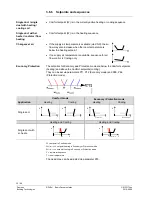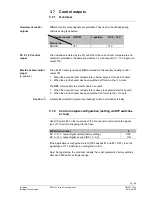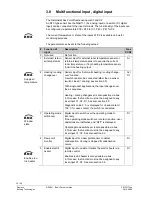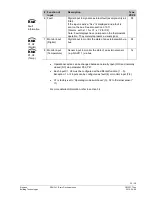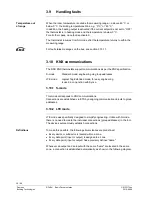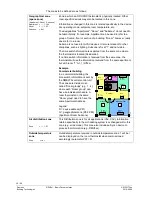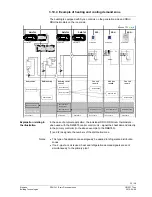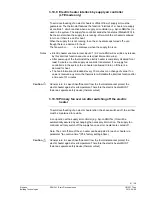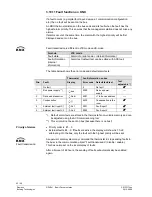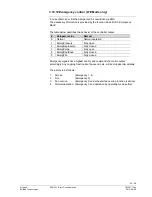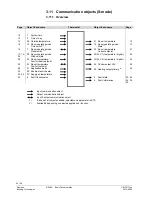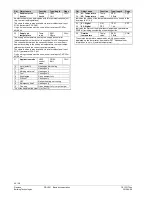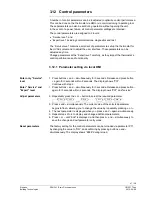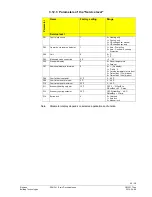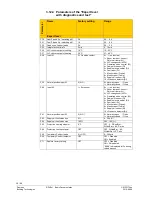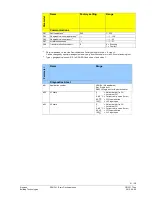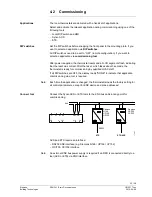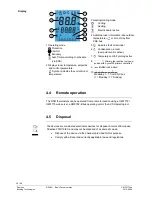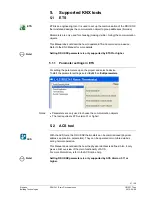
42 / 68
Siemens
RDU341 Basic Documentation
CE1P3172en
Building Technologies
2015-06-08
3.10.11 Fault function on KNX
If a fault occurs (e.g. digital fault input, dew point, communication configuration,
etc.) then a fault will be sent on the bus.
An RDU thermostat listens on the bus and sends its fault when the fault has the
highest alarm priority. This ensures that the management station does not miss any
alarms.
If alarms occur at the same time, the alarm with the highest priority will be first
displayed and sent on the bus.
Fault transmission is different in LTE mode and S-mode:
S-mode
LTE mode
Fault state
Alarm info (error code + internal information)
Fault information
(internal
information)
Alarm text (default text can be edited with ACS tool)
The table below shows the error code and default alarm texts.
Thermostat
Fault information on bus
Prio
Fault
Display
Error code
Default fault text
Text
adjustable *)
-
No fault
---
0
No fault
ü
1
Bus power supply**)
bus
5000
No bus power
supply
---
2
Device address error
Addr
6001
>1 id device address
---
3
Condensation
4930
Condensation in the
room
ü
4
External fault input X1
AL1
9001
Fault input 1
ü
5
External fault input X2
AL2
9002
Fault input 2
ü
*) Default alarm texts are stored in the thermostat’s non-volatile memory and can
be adjusted using the ACS commissioning tool
**) This error will not be sent on bus (because there is no bus!)
·
Priority order is #1…5
·
External faults #4…5: If faults are active, the display will show AL1, AL2,
alternating. On the bus, only the fault with the highest priority will be sent
A supervisor alarm system may command the thermostat to stop sending faults to
the bus via the communication object “Fault transmission” (disable / enable).
This has no impact on the local display of faults.
After a timeout of 48 hours, the sending of faults will automatically be enabled
again.
KNX
R
Priority of alarms
KNX
R
Fault transmission

